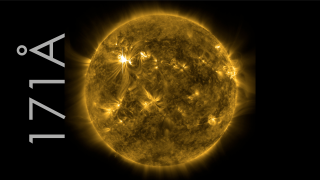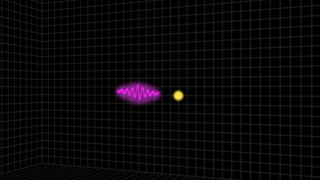NASA's Fermi Detects the Highest-Energy Light from a Solar Flare
"For most of Fermi's four years in orbit, its Large Area Telescope (LAT) saw the sun as a faint, steady gamma-ray source thanks to the impacts of high-speed particles called cosmic rays," said Nicola Omodei, an astrophysicist at Stanford University in California. "Now we're beginning to see what the sun itself can do."
A solar flare is an explosive blast of light and charged particles. The powerful March 7 flare, which earned a classification of X5.4 based on the peak intensity of its X-rays, is the strongest eruption so far observed by Fermi's LAT. The flare produced such an outpouring of gamma rays — a form of light with even greater energy than X-rays — that the sun briefly became the brightest object in the gamma-ray sky.
At the flare's peak, the LAT detected gamma rays with two billion times the energy of visible light, or about 4 billion electron volts (GeV), easily setting a record for the highest-energy light ever detected during or just after a solar flare. The flux of high-energy gamma rays, defined as those with energies beyond 100 million electron volts (MeV), was 1,000 times greater than the sun's steady output.
The March 7 flare also is notable for the persistence of its gamma-ray emission. Fermi's LAT detected high-energy gamma rays for about 20 hours, two and a half times longer than any event on record.
Additionally, the event marks the first time a greater-than-100-MeV gamma-ray source has been localized to the sun's disk, thanks to the LAT's keen angular resolution.
Flares and other eruptive solar events produce gamma rays by accelerating charged particles, which then collide with matter in the sun's atmosphere and visible surface. For instance, interactions among protons result in short-lived subatomic particles called pions, which produce high-energy gamma rays when they decay. Nuclei excited by collisions with lower-energy ions give off characteristic gamma rays as they settle down. Accelerated electrons emit gamma rays as they collide with protons and atomic nuclei.
Solar eruptions are now on the rise as the sun progresses toward the peak of its roughly 11-year-long activity cycle, now expected in mid-2013.
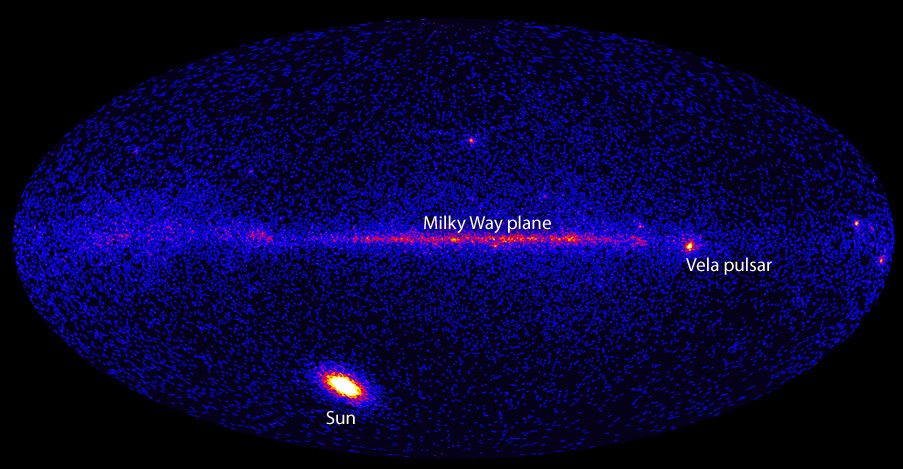

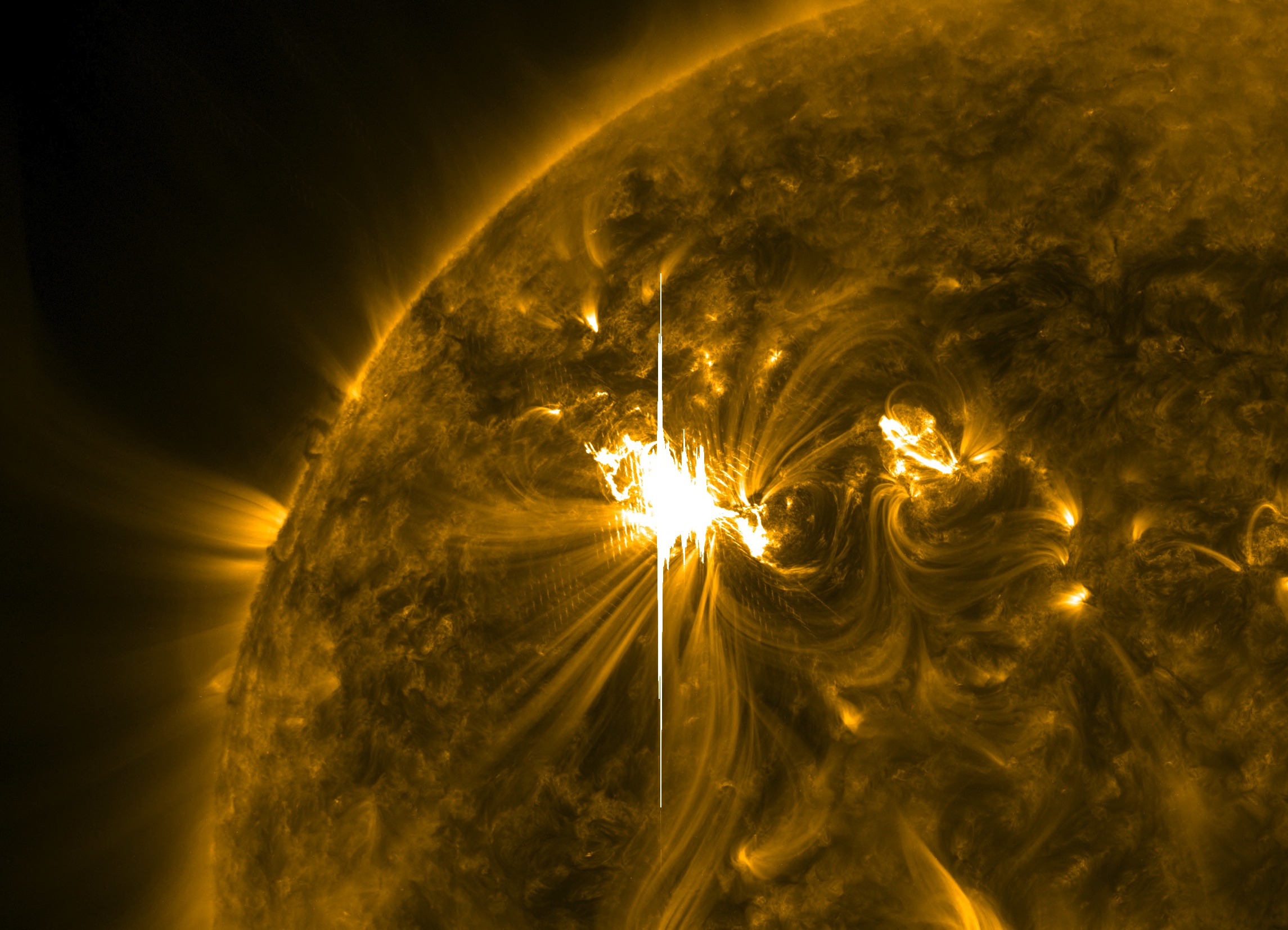

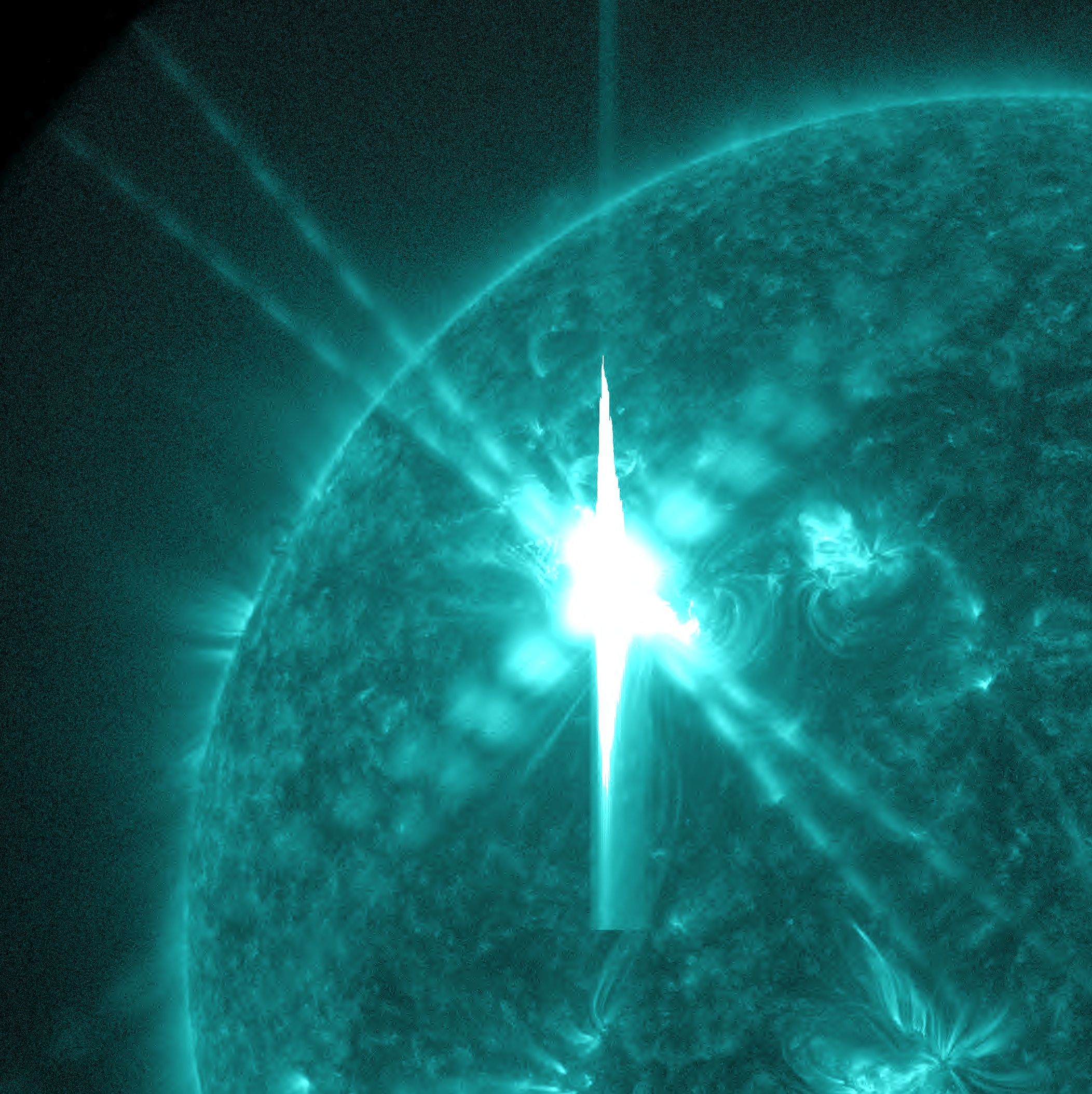

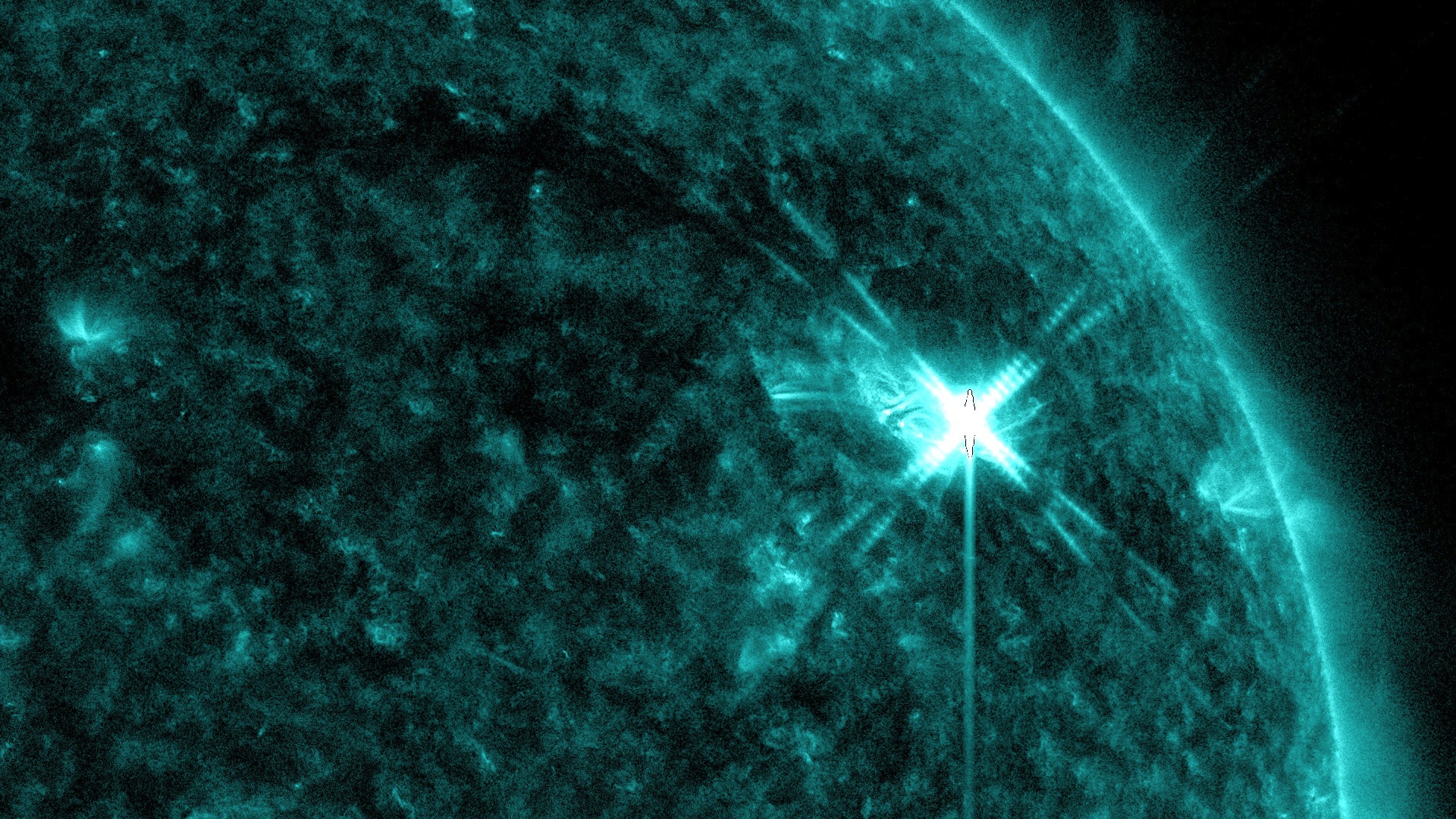
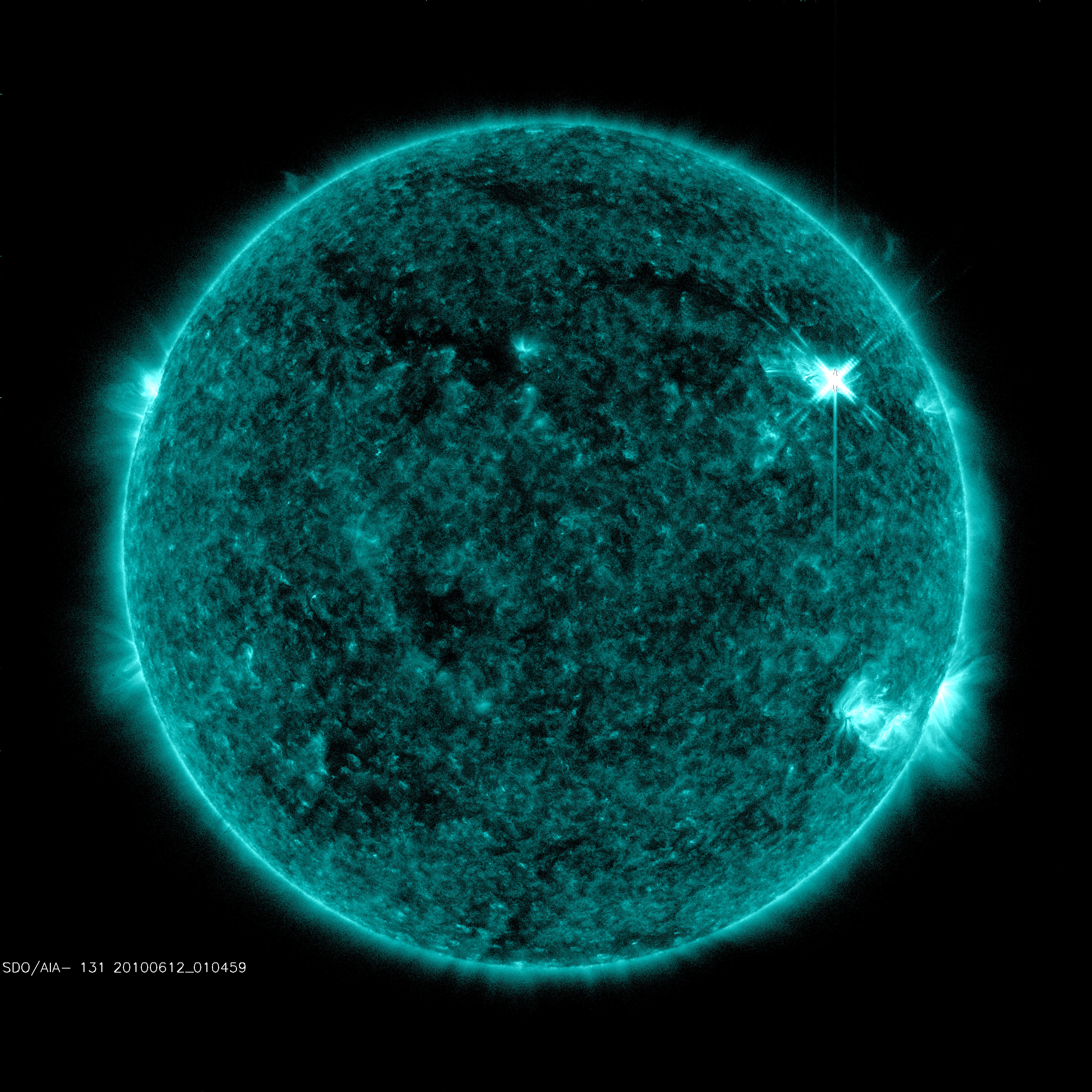
Related
For More Information
Credits
Scott Wiessinger (USRA): Video Editor
Scott Wiessinger (USRA): Producer
Francis Reddy (SPSYS): Writer
NASA/Goddard Space Flight Center. However, individual images should be credited as indicated above.
https://svs.gsfc.nasa.gov/11000
Missions:
Fermi Gamma-ray Space Telescope
SDO
Data Used: Note: While we identify the data sets used in these visualizations, we do not store any further details nor the data sets themselves on our site.
This item is part of this series:
Narrated Movies
Goddard TV Tape:
G2012-063 -- Fermi Solar Flares
Keywords:
SVS >> HDTV
GCMD >> Earth Science >> Spectral/Engineering >> Gamma Ray
GCMD >> Earth Science >> Sun-earth Interactions >> Solar Activity >> Solar Flares
GCMD >> Earth Science >> Sun-earth Interactions >> Solar Activity >> Solar Ultraviolet
SVS >> Astrophysics
SVS >> SDO
SVS >> Solar Dynamics Observatory
SVS >> Space
SVS >> Fermi
SVS >> Heliophysics
DLESE >> Narrated
NASA Science >> Sun
NASA Science >> Universe
GCMD keywords can be found on the Internet with the following citation: Olsen, L.M., G. Major, K. Shein, J. Scialdone, S. Ritz, T. Stevens, M. Morahan, A. Aleman, R. Vogel, S. Leicester, H. Weir, M. Meaux, S. Grebas, C.Solomon, M. Holland, T. Northcutt, R. A. Restrepo, R. Bilodeau, 2013. NASA/Global Change Master Directory (GCMD) Earth Science Keywords. Version 8.0.0.0.0
